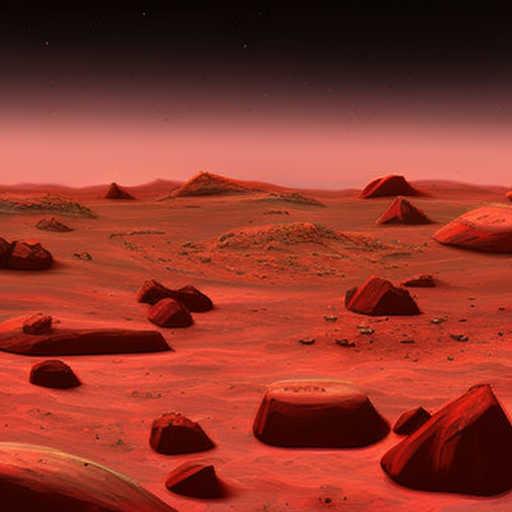
The Rustic Red Landscape: Exploring the Surface of Mars
Mars, commonly known as the Red Planet, is the fourth planet from the sun and the second smallest planet in the solar system. Throughout the years, the fascinating planet has intrigued researchers, astronomers, and space enthusiasts worldwide; its unique rusty red landscape has always been a matter of awe for humanity.

Mars’ distinctive crimson-red surface is simply breathtaking. The planet’s surface color is due to the iron oxide rust that covers the terrain and rocks. The Red Planet’s atmosphere is thin, and its surface is too hostile for humans, with temperatures ranging well below freezing, and no breathable air or water present. However, this has not stopped scientists from exploring the planet using various machines and equipment.
Mission Mars
NASA, along with other space organizations worldwide, has launched multiple missions to Mars to learn more about the Rusty Red Planet. In recent years, NASA has sent a few well-known rovers to explore the surface of Mars, including the Sojourner, Spirit, Opportunity, Curiosity, and the latest addition, Perseverance. Thanks to the advances in technology, these robotic explorers have been able to collect invaluable data and images that have helped researchers understand more about the planet’s surface and its potential for human colonization.

Exploring the Surface of Mars
The terrain of Mars is as varied as it is beautiful. The landscape includes towering volcanoes, deep canyons, plains, and vast deserts, each with its unique characteristics. The surface of Mars is as intriguing as it is hostile. The planet’s harsh environmental conditions, including radiation, dust storms, and extreme temperatures, make it challenging for human exploration. However, despite its challenging nature, scientists are working towards finding a way to make Mars habitable for humans in the future.
Exploring Valles Marineris
Valles Marineris is one of the most prominent Martian canyons and is believed to have formed from tectonic activity rather than water erosion. It is a system of canyons that stretches for over four thousand kilometers and is over seven kilometers deep. The canyon’s walls are stratified with various colors, and the floor contains smooth regions covered with boulders and sand. Perseverance Rover, equipped with instruments like SuperCam and Mastcam-Z, is currently exploring this canyon, looking for signs of ancient microbial life and gaining a better understanding of the canyon’s geology.

Exploring Olympus Mons
Olympus Mons is the largest volcano in the solar system. It is located on the western edge of the Tharsis volcanic plateau and towers over 13 miles above the Martian surface, making it almost three times the height of Mount Everest. The volcano is part of a larger volcanic plateau that contains several other volcanoes, including Arsia Mons, Pavonis Mons, and Ascraeus Mons. Scientists believe that the volcanoes on Mars are no longer active, but they are still studying and learning about their formation and history.

In conclusion, Mars’ Red Rustic landscape is as captivating as it is haunting. The stunning Martian terrain, with its towering volcanoes, deep canyons, and vast deserts, has always found a special place in the hearts of space enthusiasts worldwide. The exploration of Mars is still an ongoing effort, and scientists worldwide are continuing their research to learn more about the red planet’s geology, history, and potential as a future human colony. With the advancements in technology and the collective efforts of space organizations worldwide, the goal of reaching and inhabiting Mars may one day become a reality.





















